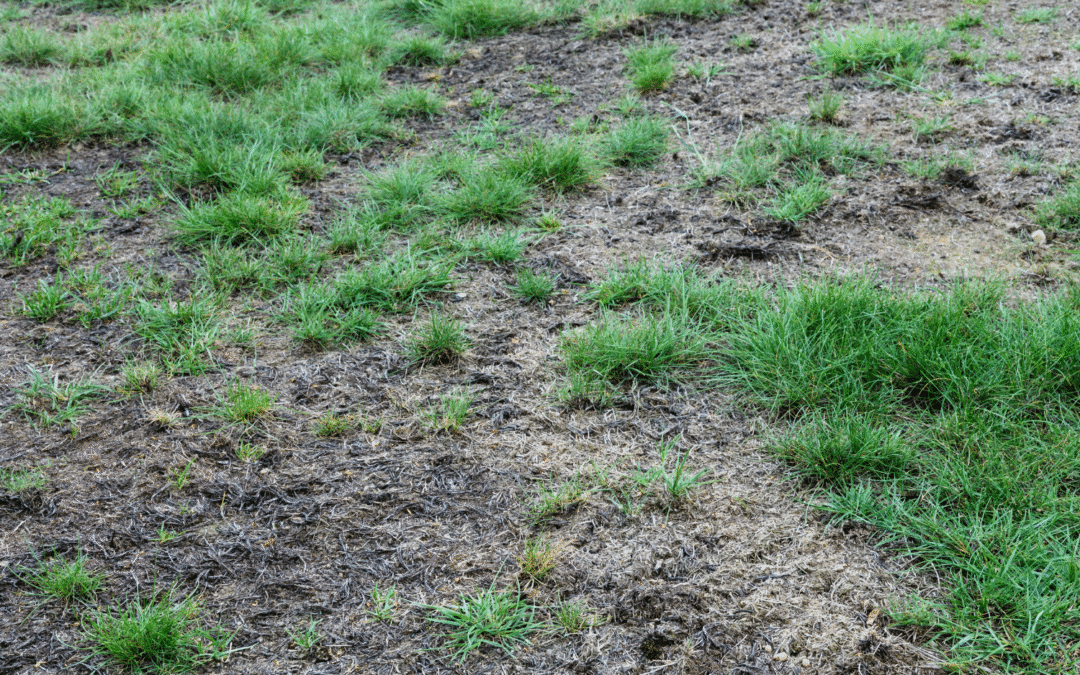The shift from a damp, cool spring to a sudden burst of summer heat has created the perfect storm for lawn diseases in Western Massachusetts. At G&H Landscaping, we’re seeing an uptick in common turf issues like Red Thread, Dollar Spot, and Leaf Spot—and while they may look alarming, there’s no need to panic.
Here’s what homeowners need to know about what’s happening, what to do now, and how to protect your lawn in the weeks ahead.
Why Lawn Diseases Are Thriving Right Now
Over the last 4–6 weeks, we’ve experienced prolonged wet, overcast, and cool weather—ideal conditions for spring lawn diseases to take hold. Now, with a sudden blast of heat and humidity, those diseases have the opportunity to rapidly progress.
However, the good news is:
A healthy lawn is your best defense. If your turf is well-maintained, minor infections won’t cause lasting damage—and immediate treatment may not even be necessary.
Common Lawn Diseases to Watch For
Red Thread (aka Pink Patch)
-
What to look for: Circular patches with pink or reddish grass tips; thinning and distressed appearance.
-
Tip: A light boost of quick-release nitrogen fertilizer can often push it out.
-
Avoid overwatering or nighttime watering.
Leaf Spot
-
What to look for: Burn-like lesions on grass blades that lead to yellowing, thinning, and eventual “melting out” in hot weather.
-
Caution: Unlike Red Thread, too much fertilizer can worsen Leaf Spot.
Both of these diseases can harm weak or stressed turf. Before jumping to chemical treatments, try a few simple cultural practices that can make a big difference.
Immediate Actions You Can Take
You don’t need to resort to fungicides right away. First, implement these adjustments:
-
Water only in the early morning – avoid nighttime irrigation.
-
Raise your mowing height to 3.75″–4″ (or higher during heat waves).
-
Pick up clippings to reduce moisture buildup.
-
Sharpen mower blades to avoid stressing the grass.
-
Maintain balanced fertility (don’t over-fertilize!).
-
Mow more frequently at the proper height.
If your lawn is struggling despite these steps, your G&H lawn care professional may recommend fungicide treatments. In severe cases, a series of two applications spaced 10–14 days apart may be necessary. If you’re enrolled in our Platinum 7 Program, these treatments are included as needed—but even then, total disease prevention is not guaranteed.
Heat & Stress Alert: What to Do During a Heat Wave
With forecasts predicting several days of 90°–100°F temperatures, it’s critical to adjust your care routine:
-
Increase watering frequency to daily, boosting current irrigation time by 25%–50%.
-
Always water early in the morning to avoid evaporation loss.
-
Raise mowing height to 4″ or more—use the highest setting your mower allows.
-
Use a sharp blade to minimize damage to heat-stressed grass.
-
Don’t forget your shrubs—if you notice wilting, give them a heavy watering too.
Healthy Lawns Start with Smart Practices
At G&H Landscaping, we believe that informed homeowners grow healthier lawns. By staying ahead of disease and heat stress with simple preventive measures, you can avoid unnecessary treatments and keep your lawn thriving all season long.
Have questions about what you’re seeing in your yard? Contact our team today for a professional lawn evaluation.
Serving Holyoke, MA and surrounding Western Massachusetts communities
📞 413-532-4888
🌐 www.ghlandscaping.com

